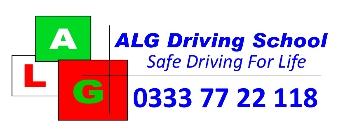
Anticipating distance
Keeping your distance isn't only about being able to stop in time. It gives you more scope to see ahead of the vehicle in front, and spot a hazard before it becomes a danger to you. For example, driving this way, you will often be able to see a car emerging ahead the car in front of you, and brake before they do, enabling you to do so more smoothly, and helping to make the journey drama-free. It pays to be able to see ahead at least two vehicles in front of you.

Anticipating other drivers
You can also aid your anticipation by reading the drivers around you. Though not encouraged, many drivers flash their lights, either as a warning of a hazard, or to let another vehicle emerge. A vehicle approaching you flashing their lights is a sure sign that you need to be prepared to slow down, or even stop soon.
Many people also miss the fact that a driver indicating to turn off a country road will slow down a lot more than a driver who is simply braking for a hazard. They may travel for quite a distance with their indicator on before slowing sharply to turn into the junction, and this often catches out following vehicles.

Anticipating pedestrians
Pedestrians are generally well behaved. As long as you stay on the road, they will stick to the pavement. In more built up areas however, you will find your territories sometimes merge, and this can very often cause confusion or discord. Recent updates to the Highway Code mean a pedestrian crossing the road at a junction has priority over a vehicle turning in, so you will need to take account of their movements before commencing a manoeuvre.
In areas with rows of parked cars, it generally pays to drive slowly and cover the brake pedal if possible, so you can react quickly to anyone walking or running out from between vehicles.

Anticipating animals
Whether you are driving in the town or the countryside, you will at some point or another encounter wildlife in the road. No one wants to run over an animal, and that's before we consider the potential damage to your own vehicle. As a general rule of thumb, as your vehicle approaches, an animal will run in the direction it is facing, even if that means crossing directly across your path.
Cats will often run, then hesitate, and then run again, causing confusion and panic for everyone concerned. In the countryside be especially aware of deer. If one crosses in front of you, it is very likely the rest of the herd will follow suit. In darkness you may only see their eyes, as moving pairs of green dots in the undergrowth.

Anticipating conditions
As winter draws near, road conditions can become more and more variable. You may be sailing along a clear road one moment, and be on black ice, or aquaplaning through a deep puddle of water the next. You may find your vehicle pulls to one side or the other as the wheels encounter differing levels of resistance. In darkness, after rainfall, keep an eye out for dark patches on the road surface, and be ready as you approach to match your steering input to the variable levels of grip coming from the tyres.

Anticipating your route
Even if you have a sat nav, it pays to look up your route before you set off – particularly for a long journey, or to an unfamiliar location. While the distraction factor of mobile phones is well documented, over-focussing on sat-nav systems while driving is also undesirable. Knowing where likely turn-offs will be before the sat-nav tells you gives you more time to find the right lane, and means less time making awkward turns while the system recalculates.

